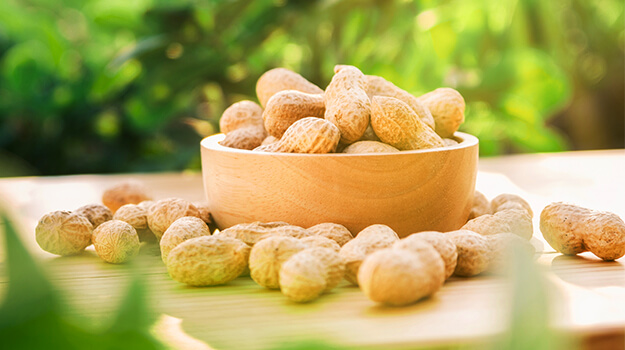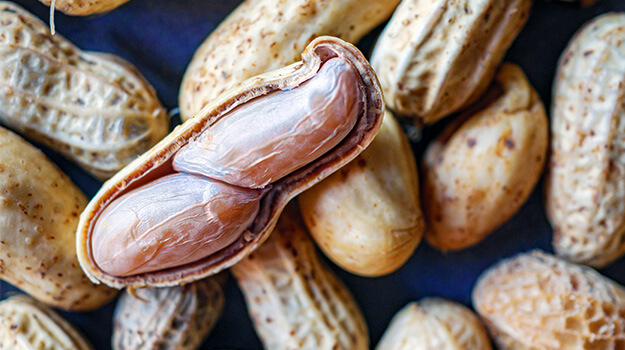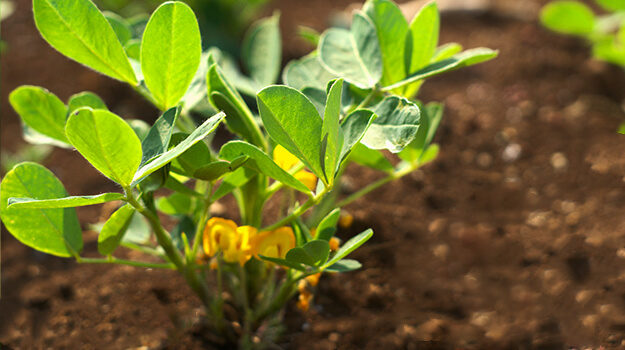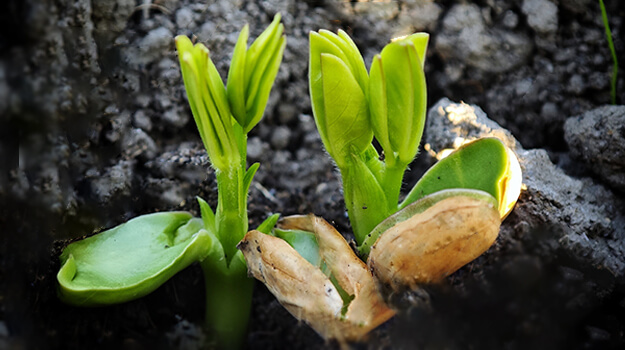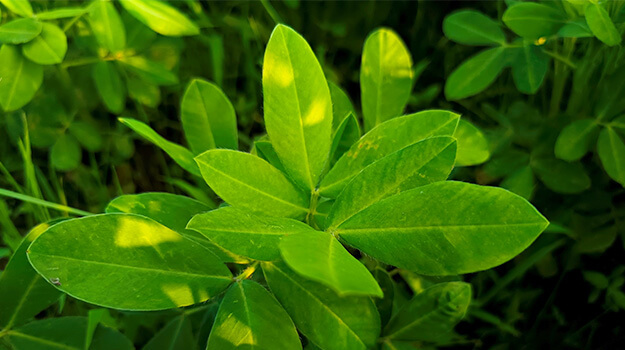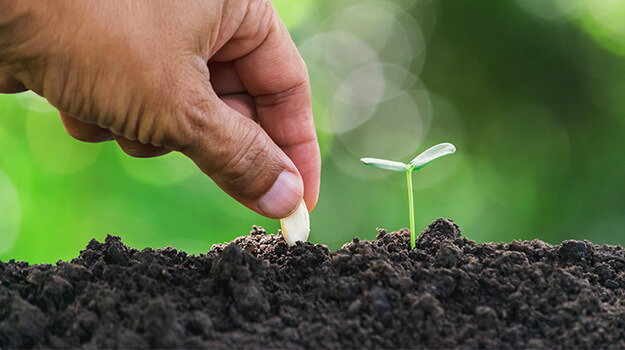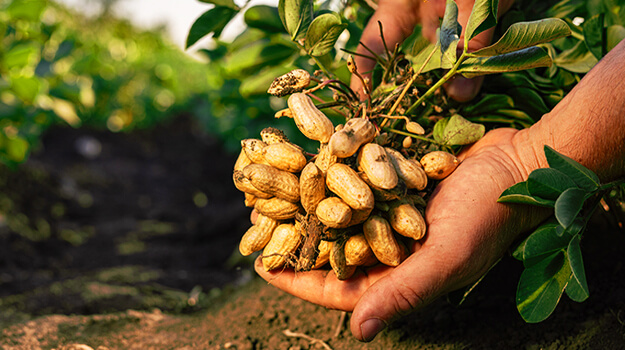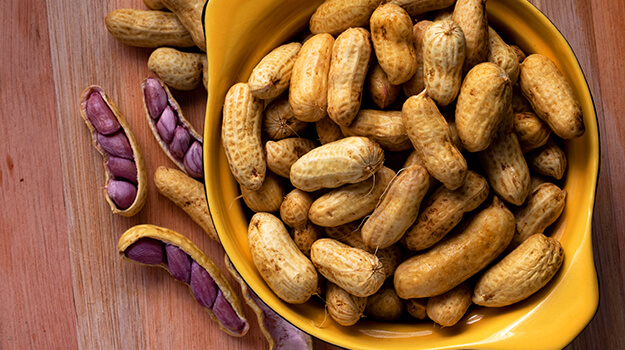- Peanut is a legume and not a nut
- How do peanuts grow
- Where peanut plants grow best
- Can I grow a peanut plant from a peanut
- Starting peanuts seeds indoors
- Bringing the seedlings outdoors
- Planting peanuts: direct seeding in the garden
- How do I plants peanuts
- When to harvest peanuts
- Over-roasted peanuts recipe
- Boiled peanuts recipe
One of the fun things about growing your own food is the continuing opportunity to push the growing season and to try new plants, even those that aren’t usually grown in northern gardens.
That’s what makes growing peanuts here interesting, something children and adults alike will be amazed at in your garden… even in Canada.
It’s easier in southern regions, where the summer days can be hot, and the season can extend long enough. Still, there are seeds available that will grow in a shorter season, but you will still need at least 100 days to harvest. Although you could get 100 frost-free days in some areas of Canada, the best-case scenario is to start them indoors in April and transplant the seedlings after the last frost.
Peanut is a legume and not a nut
People are often surprised to learn that peanuts are not nuts at all, rather they are legumes related to beans and peas.
This plant is from South America, and therefore it needs a long growing season. Most commercial growing is done in the southern states. The northern climate isn't conducive enough to growing peanuts as an agricultural crop. But for the home gardener, peanuts are a great compact plant to add to your vegetable garden.
How do peanuts grow
Peanuts are in a class of their own, a wonderful plant that creates food in the most unique way. They are truly distinctive because, although they do form a flower above ground, the flower drops a peg that descends into the ground.
This “peg” establishes itself underground, where it eventually grows into a clump of peanuts. If the peg does not penetrate the soil or get covered, the pods will not develop and produce peanuts.
Where peanut plants grow best
Peanuts like well-drained loose soil and a lot of heat with a long season. Pick a sunny spot in your garden that offers 8 hours of sunlight. Nevertheless, by starting seeds indoors, by using row crop covers, or even by growing them in larger patio pots that can be moved out of the cold, you can make this project quite viable.
Kids will love the harvesting part.
Peanut seeds in Canada
In Canada, peanut growing in gardens has proven successful in southern Ontario and Nova Scotia. On the West Coast, it is more difficult. Though their growing season is long, the daytime temperatures are more temperate, so maybe not hot enough. On the Prairies, the shorter growing season might be a challenge.
PRO TIPS
The Valencia peanuts variety is one of the varieties suggested for peanut cultivation in northern regions and offers a good yield, even in zone 4.
Can I grow a peanut plant from a peanut
To grow peanuts, you must start with fresh, raw, uncooked peanuts still in their shells. Most in-shell peanuts marketed for food have been roasted or blanched.
Although uncooked peanuts are available in some grocery stores, you might be better to just buy specific short-season peanut seeds from seed companies that sell them.
Take the seeds out from the shells on the day of planting but be careful not to remove or damage the tender skin on the seeds.
Starting peanuts seeds indoors
For seed starting indoors, be aware that the peanut seedling has a delicate root system, so the idea is to plant them singly in 3”- 4” peat or coco pots, which can be transplanted directly into the garden later without disturbing the roots.
How to grow your own peanuts at home
- Use a pot 2/3 full of moist seed starting mix like our Organic Seed Starting Mix.
- Place the seed on top, and then cover it with 2.5 cm (1 inch) of potting mix.
- You can cover the pots with a clear plastic bag or dome for the first week or so to keep in moisture.
- Plants will sprout quickly. Remove the plastic bag or the dome once the seedlings emerge.
PRO TIP
Some gardeners recommend soaking the seeds overnight before planting them, to speed up germination. This is optional.
To learn more about seedlings, read : Starting Vegetable Seeds Indoors: The Complete Guide
Bringing the seedlings outdoors
Transplant seedlings outside after the threat of frost has passed.
As with all indoor-started seedlings, you need to acclimate the seedlings before moving them from warm protected conditions into hot windy gardens. Move the pots outside into a shady area at first, and bring them in at night if it’s cold. Eventually move the potted seedlings into sunnier spots, until they are hardened and ready to transplant into the garden.
Plant the seedlings 15-25 cm (6-9 inches) apart in rows that are about 75 cm (30 inches) away from each other.
Planting peanuts: direct seeding in the garden
As with any good gardening, it’s nice to prepare the soil in advance of seeding.
For peanuts, in addition to loosening the soil to a depth of 6 to 8 inches (15 to 20 cm), mix a good amount of our Organic Vegetable and Herb Mix into the existing soil. Since it contains a good proportion of peat moss, you will get a light and airy environment in which to plant. Amend with compost and organic fertilizer, and add bonemeal or gypsum for the necessary extra calcium required.
When all chances of frost have passed, sow seeds 3-4 cm (1 ½ inch) deep and in the same spacing as seedlings (noted above), in a sunny area.
Seeds will germinate within 7-10 days but are slow growers for the first month. You should ensure that the planted areas are watered regularly and weeded, especially during the first phase.
How do I plants peanuts
When the plants reach 15 cm (6 inches) in height, lightly cultivate and loosen the soil so that the pegs can more readily penetrate it.
It’s a good idea to lightly mulch around the plants to keep the soil moist and loose. Once the pegs are in the ground, you can start hilling around the plant, just like a potato plant. And it’s OK to put a good layer of mulch over the hilling to retain moisture and to keep the weeds down.
Now you can back off the watering for the last few weeks before harvesting.
One nice thing about the peanut plant is that there are very few diseases and pests to harm it.
When to harvest peanuts
Harvesting usually occurs after the first frost, as the leaves begin to turn yellow.
How to harvest peanuts
- The soil must be dry for harvesting.
- Lift the pods out with a garden fork, pulling up the whole plant.
- Shake away excess soil.
- Peanuts should be left on the plant and be hung in a shed and dried for 1-2 weeks in a well-ventilated area.
- After this initial drying period, you can remove pods from the plant and spread the peanuts on a rack, or so that they are not stacked on top of each other and air can get underneath. Continue the drying for a few more weeks. Total drying time should be 4 weeks.
- Discard any unhealthy-looking nuts.
Over-roasted peanuts recipe
Once the nuts are dry enough, you can roast them.
Place whole peanuts on a cookie sheet and roast at 350 °F for about 15-20 minutes.
You will have to test with a few batches to get the level of roasting that you like. If you shell them before roasting, duration time in the oven is less. There are recipes available that may include soaking the dried peanuts in a salt brine and drying again before roasting. Experiment!
Boiled peanuts recipe
Boiled peanuts are a classic southern snack made right at harvesting, by simply boiling the green, raw, unshelled peanuts in salted water for several hours until they are soft and tender and infused with the salty brine.
Boiled peanuts have a different texture compared to crunchy roasted peanuts. They’re very soft and moist, like a cooked bean. The shells absorb the salts of the brine during the boiling process and infuse the peanuts inside.
Boiled peanuts are a delicacy of the southern United States, a comfort food, and are deeply intertwined with the culture there, being a symbol of hospitality.
Discover another specialty from the southern United States: Fried green tomatoes recipe

